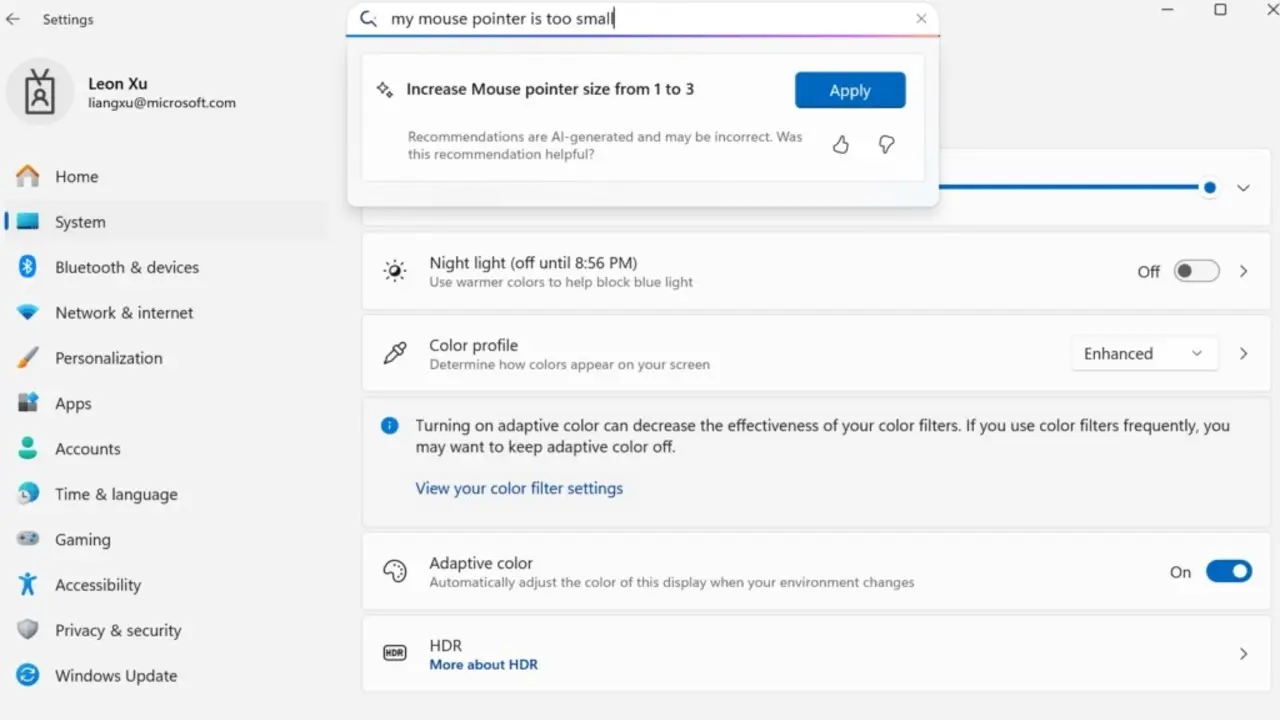Microsoft has introduced its new small language model Mu, integrated into the Windows 11 operating system. The new artificial intelligence model was placed into the operating system as part of a structure that aims to improve the user experience locally by providing natural language support, especially in the Settings application.
Artificial intelligence model integrated into Windows 11
Mu works directly with the operating system and stands out especially with its natural language search feature. This new model, which was tested in the Dev Channel of the Windows Insider program, runs the “smart agent” feature in the Settings application.

This agent allows users to interact with the system with multi-word natural language queries instead of short keywords. For example, when the user only types “Bluetooth”, the relevant settings screen is listed in the classic way. However, when a query such as “How to connect a new Bluetooth headset?” is typed, Mu understands this request and directly opens the Bluetooth device addition page.
The model was developed to be compatible with hardware containing NPU (Neural Processing Unit), which Microsoft calls Copilot+ PC. Previously, a model called Phi-Silica was used in these systems. However, with the new integration, the language model that takes part in the Settings application became Mu. The infrastructure and performance data on which the model was developed were also shared.
Microsoft announced that Mu was built on the encoder-decoder architecture and contained a total of 330 million parameters. The number of parameters was reduced by sharing some weights in the structure. The training process was carried out on Microsoft’s Azure Machine Learning platform. Nvidia A100 GPUs were used in the training.
In performance comparisons, Mu provides approximately 47% lower first token latency than decoder-only models of similar size. It also reaches 4.7 times faster resolution speed. According to Microsoft’s data, Mu offers similar output quality despite only taking up one-tenth the size of the Phi-3.5-mini model.













